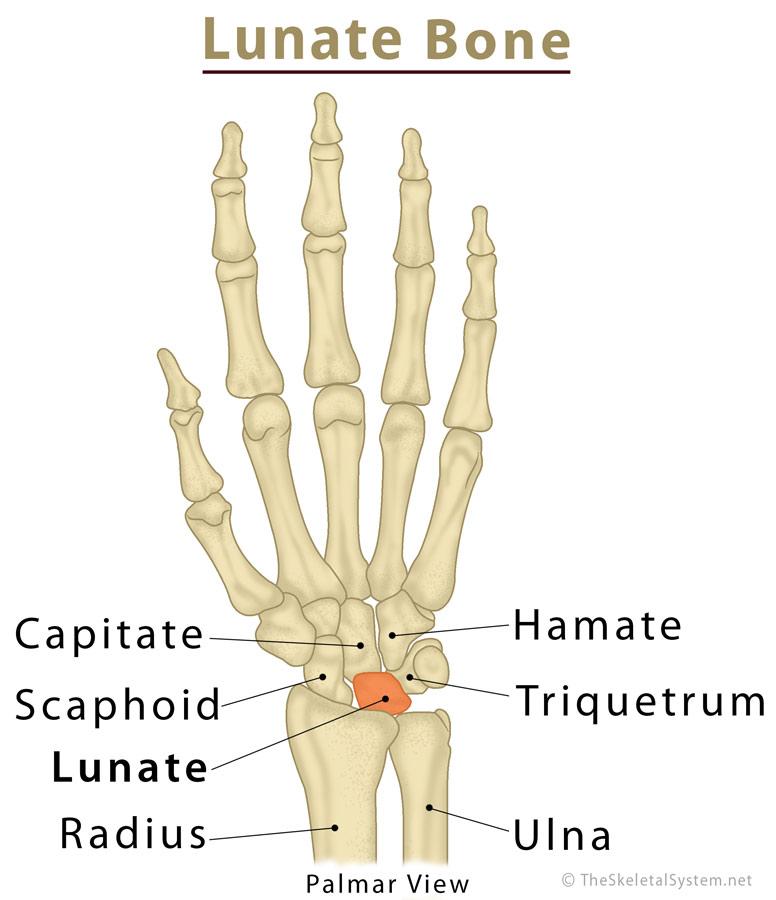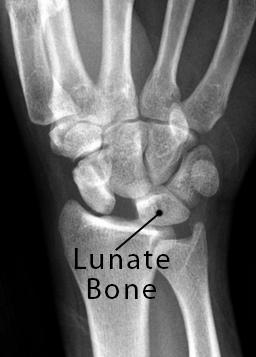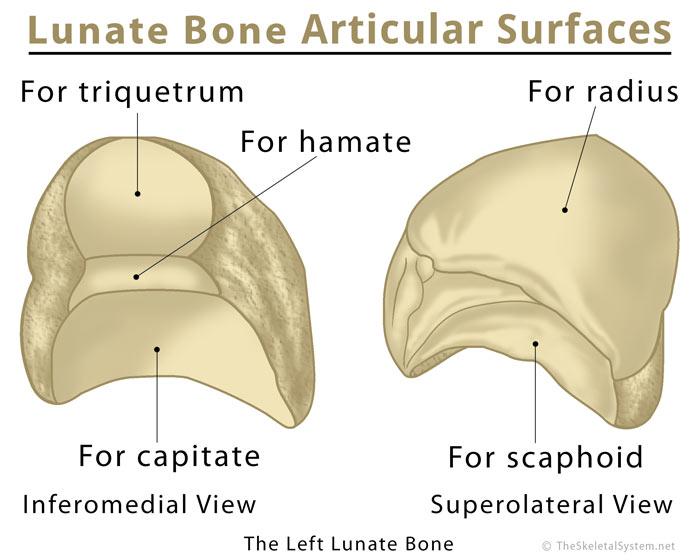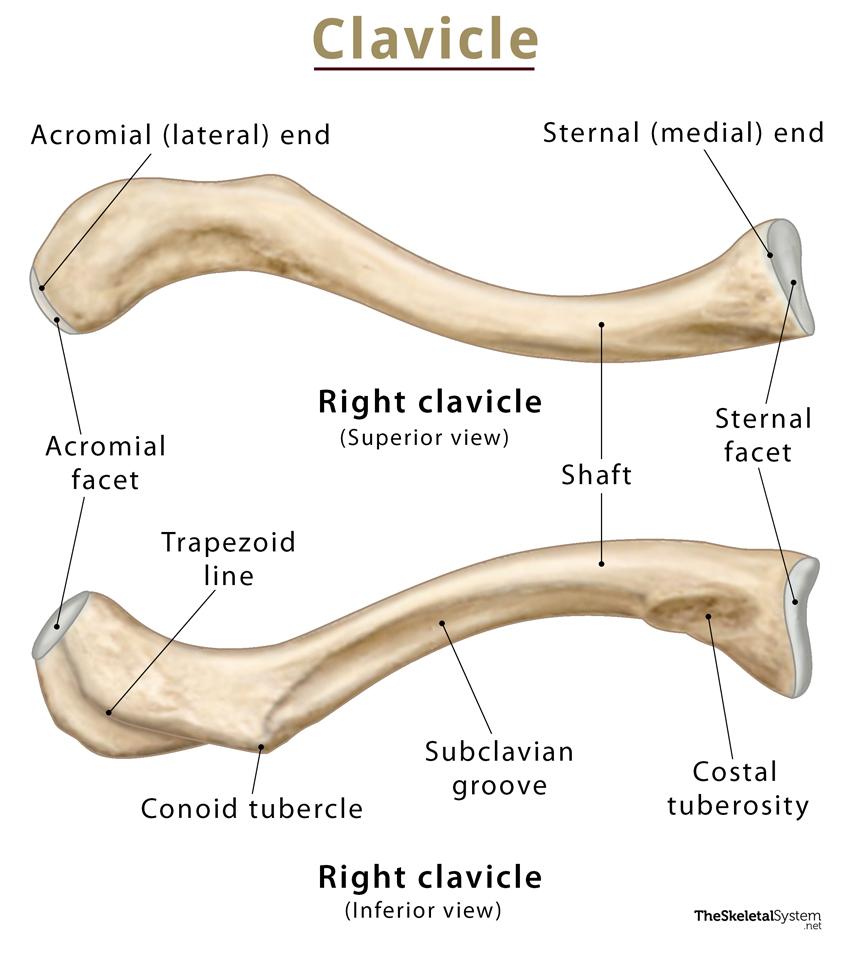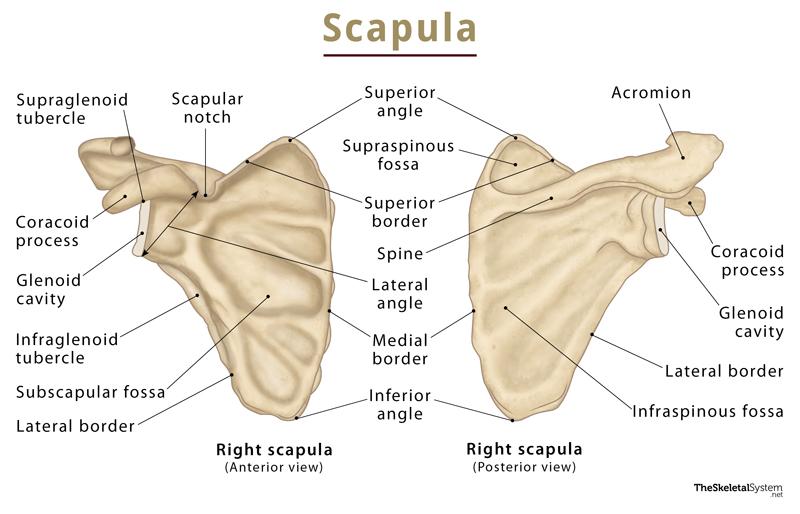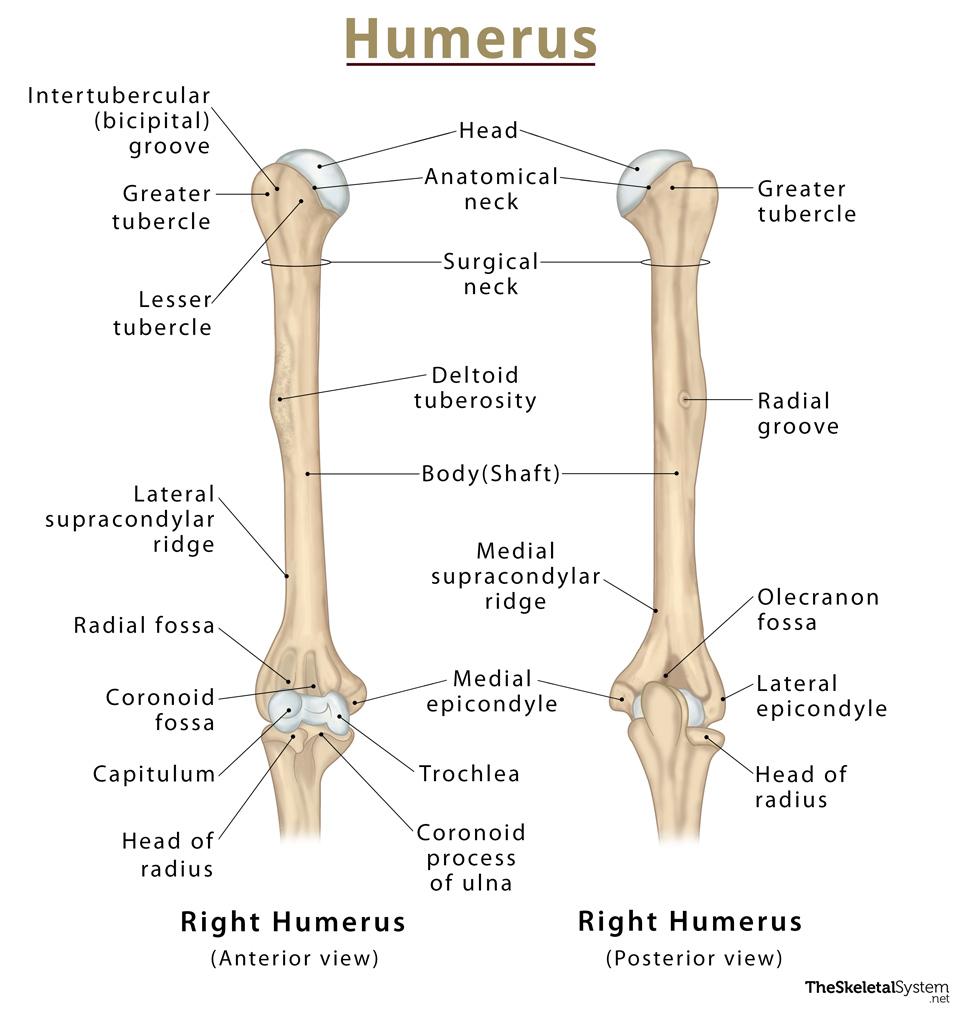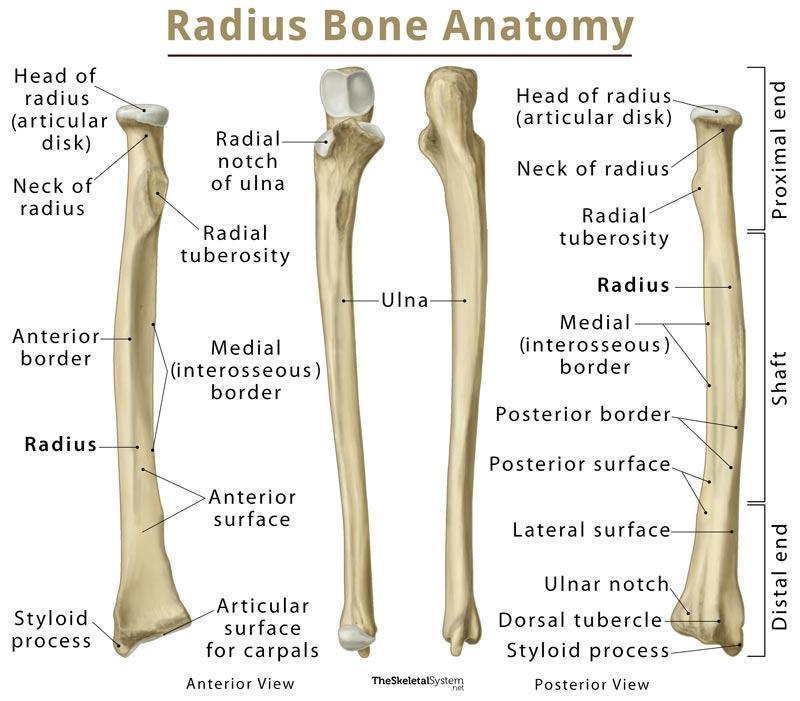Lunate Bone
Definition: What is the Lunate Bone
The lunate (Latin: os lunatum), also known as the semilunar bone, is one of the eight carpal or wrist bones in humans [1]. The bone resembles a crescent moon in shape, getting its name from the Latin term ‘luna’, meaning ‘moon’ [2].
Where is the lunate Bone Located
Lunate is situated between the scaphoid bone and the distal carpal bone triquetrum [3]. It is the second bone from the thumb in the proximal carpal row, after the scaphoid [4].
Development and Ossification
It is cartilaginous at birth, beginning to ossify between the second and fourth year of life [5]. The ossification is usually complete in girls within 6 years of age, while in boys it completes when they are around 7 years old [1, 6].
Lunate Bone Structure and Anatomy
Surfaces and Articulations
The distal surface of lunate articulates with the capitate, and hamate bones, while the scaphoid bone forms an articulation with its lateral surface [3]. The triquetrum, the fourth carpal bone connected with the lunate [4], articulates with its medial surface [1]. The lunate’s proximal surface articulates with the radius, while, along with the triquetrum and scaphoid, it forms the distal surface of articulation of the wrist or radiocarpal joint [7].
The proximal facet (the one articulating with radius) is convex, while the distal facet (articulating with the capitate) is concave, giving lunate the characteristic half moon shape [1].
Ligament Attachments
The lunate is connected with the bones around it by the scapholunate, lunotriquetral, radiolunotriquetral, and ulnolunate ligaments [1]. However, this bone has no muscular attachments [8].
Blood Supply
The lunate has a rich blood supply from dorsal radiocarpal and intercarpal arch branches, via its palmar and dorsal surfaces, or sometimes only the palmar surface [1, 9].
Functions: What Does the Lunate Do
Like all the other wrist bones, lunate is responsible for shaping the wrist and maintaining its flexibility. Being part of the proximal carpal row, it is part of the joint between the carpal bones and the lower arm bones radius and ulna (the radiocarpal joint) [8].
Associated Conditions and Common Injuries
Dislocation: As there are only a few ligaments, and no muscular attachments holding the lunate in place, it is the most commonly dislocated of all the wrist bones [8].
Kienböck’s Disease (avascular necrosis of lunate): Sometimes, the blood supply to a bone may get hampered (due to an accident or trauma), making the bone weak or brittle, finally leading to necrosis. Lunate, with its rich blood supply and only ligament attachments, is believed to be more susceptible to this condition. In severe cases, Kienböck’s disease may need a surgery to regain use of the hand and wrist [4, 9].
References
- https://radiopaedia.org/articles/lunate-1
- http://www.anatomyexpert.com/app/structure/65/96/
- http://anatomyzone.com/anatomy-feed/lunate-bone/
- https://www.healthline.com/human-body-maps/lunate-bone
- http://sketchymedicine.com/2016/01/carpal-bone-ossification/
- https://www.researchgate.net/publication/308941525_Osseous_Anatomy_and_Microanatomy_of_the_Lunate
- https://www.kenhub.com/en/library/anatomy/carpal-bones#section3
- https://musculoskeletalkey.com/structure-and-function-of-the-wrist/
- https://www.ncbi.nlm.nih.gov/pubmed/21348025

